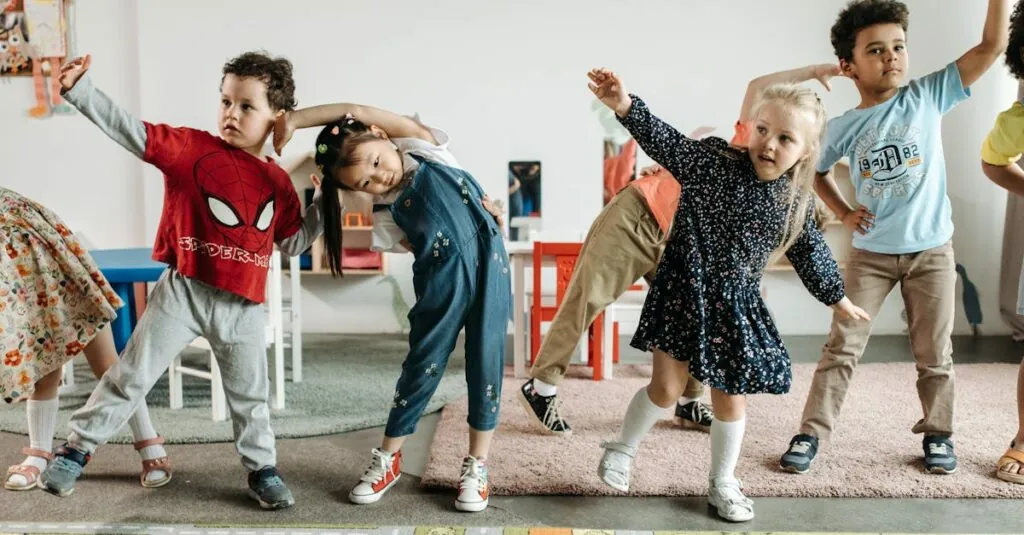In the bustling world of elementary classrooms, teachers often juggle a million tasks while trying to capture the essence of each student’s unique journey. Enter the anecdotal record—a superhero tool that transforms everyday moments into meaningful insights. It’s like having a personal assistant who takes notes on all the giggles, lightbulb moments, and occasional chaos that unfold each day.
Table of Contents
ToggleOverview of Anecdotal Records
Anecdotal records serve as concise snapshots of student experiences. These records document specific instances of behavior, skill development, or social interactions that occur in the classroom. Teachers use this method to capture spontaneous moments that reflect a student’s progress and challenges.
Maintaining anecdotal records aids educators in identifying patterns in student behavior. Recording incidents allows for meaningful analysis over time, making it easier to tailor instruction according to individual needs. Teachers can quickly reference these entries during parent-teacher conferences or when developing individualized education plans.
Implementing anecdotal records fosters a strong communication link between home and school. Parents gain insights into their child’s day-to-day activities and classroom experiences, promoting collaboration in supporting student growth. Sharing these records keeps parents informed and involved in their child’s learning journey.
Adopting a systematic approach to recording anecdotes enhances the effectiveness of this tool. Educators can categorize entries by subject area or skill set, making it easier to track overall development. Using a consistent format ensures that records remain clear and organized for future reference.
Overall, anecdotal records provide an invaluable resource for elementary educators. Capturing the essence of student experiences allows for a more holistic understanding of each child’s learning path. Relying on these documented observations ultimately improves instructional strategies and supports student success in the classroom.
Importance of Anecdotal Records in Education
Anecdotal records enhance the educational experience for both teachers and students. They offer essential insights that contribute to effective learning environments.
Benefits for Teachers
Anecdotal records provide teachers with clear documentation of student behaviors and skills. Teachers use these records to reflect on classroom dynamics and adapt instructional methods. Patterns observed in these entries assist in identifying students who may require additional support. Flexibility in lesson planning emerges as teachers tailor instruction to individual needs. Collaboration between teachers becomes easier, as shared records serve as a reference during discussions or meetings.
Benefits for Students
Students gain from the individualized attention that anecdotal records promote. Personalized feedback aids in skill development, allowing for targeted growth. Recognition of achievements boosts student confidence and motivates further learning. Social interactions documented through anecdotes nurture a sense of community and belonging in the classroom. Connection with educators strengthens as students see their unique experiences reflected in the records.
Components of a Sample Anecdotal Record
Anecdotal records consist of specific components that provide clarity and context. Teachers focus on these key elements to create effective documentation of student experiences.
Observational Details
Observational details include the date, time, and location of an observed event. These elements establish a framework for understanding the situation. Accurate notation of environmental factors may also contribute to the context. For instance, a record could note the classroom setting during a group activity. This clarity enables teachers to analyze patterns in student behavior over time effectively.
Context of the Observation
Context of the observation explains the circumstances surrounding the incident. Relevant background information enriches understanding of students’ actions. For example, indicating whether a student was engaged in a structured lesson or free play provides insights into their behavior. Noting surrounding events, such as changes in routine, can also influence student responses. This comprehensive context helps educators interpret actions more effectively within the learning environment.
Student’s Actions and Behaviors
Student’s actions and behaviors focus on the specific conduct observed during an incident. Descriptions should capture both verbal and non-verbal communication cues. For instance, detailing how a student collaborates with peers or demonstrates problem-solving skills reveals critical social interactions. Highlighting positive behaviors and challenges aids in identifying areas for development. Recording these actions contributes significantly to understanding each student’s needs and progress within the classroom context.
Examples of Sample Anecdotal Records
Anecdotal records can capture a variety of student behaviors and performances. Below are examples highlighting academic and social interactions observed in the classroom.
Academic Performance Observations
On October 3, Emma completed her math assignment with minimal guidance, showcasing her understanding of fractions. During group work, Jake explained his thought process clearly to his classmates, helping them grasp the concept. Lily demonstrated improvement in reading fluency as she confidently read aloud to the group, exhibiting increased expression. Tim struggled with writing but asked for help, signaling his willingness to improve. Each entry reflects unique academic achievements and areas for growth, allowing educators to tailor strategies to meet students’ needs.
Social Interaction Observations
During recess on October 5, Sarah shared her toys with another student, fostering a sense of community. Martin observed his peers playing before joining in, indicating his emerging social skills. Alex resolved a conflict between two friends by facilitating a discussion, showcasing his leadership capabilities. Jenna and Mia collaborated effectively on a project, demonstrating their ability to work well together. These observations highlight essential social skills that contribute to a positive classroom environment and enhance peer relationships.
Anecdotal records are essential tools for elementary educators aiming to enhance student learning. By documenting individual experiences and behaviors, teachers can create a clearer picture of each child’s development. This method not only aids in tailoring instruction but also fosters stronger connections between home and school.
The insights gathered from these records empower teachers to reflect on their practices and adapt their approaches to meet diverse needs. As educators embrace anecdotal records, they contribute to a more personalized and supportive learning environment. Ultimately, this practice enriches the educational experience for both students and teachers, paving the way for greater success in the classroom.

